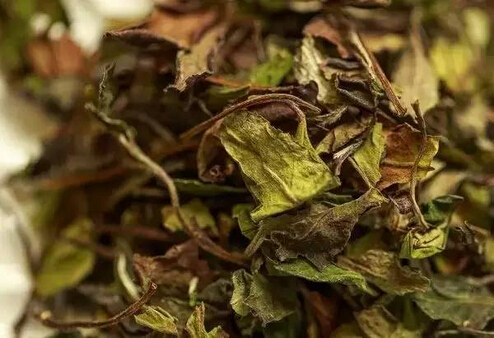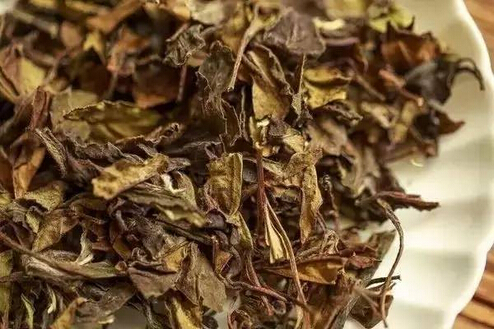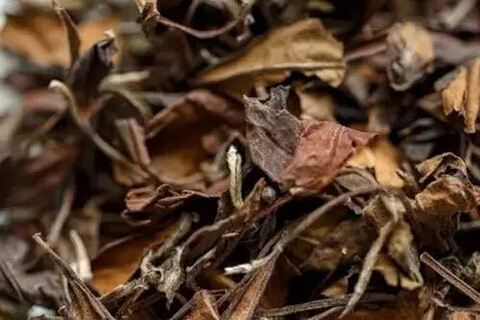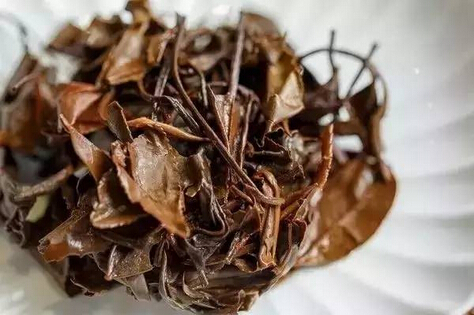Counterfeit aged white tea is referred to as 'artificially aged' by insiders.
Artificially aged white tea is usually sold in the form of tea cakes or bricks. To make a white tea cake, the dried leaves are softened with steam, pressed into shape, and then dried. A more scientific approach involves steaming for just a few seconds, followed by slow drying at controlled temperatures for about 15 hours, avoiding haste.

In contrast, artificially aged white tea is first watered before steaming and then subjected to high-temperature 'fermentation.'
Both methods severely compromise the quality of the tea. Essentially, artificially aged tea is a spoiled, inferior product. Initially, its flavor and appearance can be deceptive, but over time, it deteriorates completely.
First, observe the color of the tea cake. Authentic aged white tea displays a 'kaleidoscope of colors': the silvery-white hairs turn grayish-silver, unconverted leaves remain green, partially oxidized leaves turn brown or yellow, and deeply fermented leaves become black.

If the tea cake is uniformly brown or black, it is likely artificially aged through watering and high-temperature fermentation.
Second, assess the taste and aroma. Authentic white tea is known for its 'silvery fragrance and honeyed sweetness.' Tea aged 3–8 years carries a lotus leaf aroma, 8–15 years develops a jujube fragrance, and over 15 years exudes a herbal scent.
If the tea only has a stale aroma without other layered scents, tastes flat like Pu-erh tea, and lacks durability in brewing, it is likely artificially aged.

Genuine aged white tea has a smooth, sweet taste with a rich aroma lingering in the cup. Tea aged over eight years remains flavorful even after a dozen infusions.
Lastly, examine the brewed leaves. Naturally oxidized and slowly fermented aged white tea has clear, active leaf veins, while artificially processed tea has blurred veins and crumbles easily when touched.

In summary, identifying genuine aged tea often relies on indirect clues rather than absolute proof. Therefore, gaining experience through frequent tasting and comparison is essential.